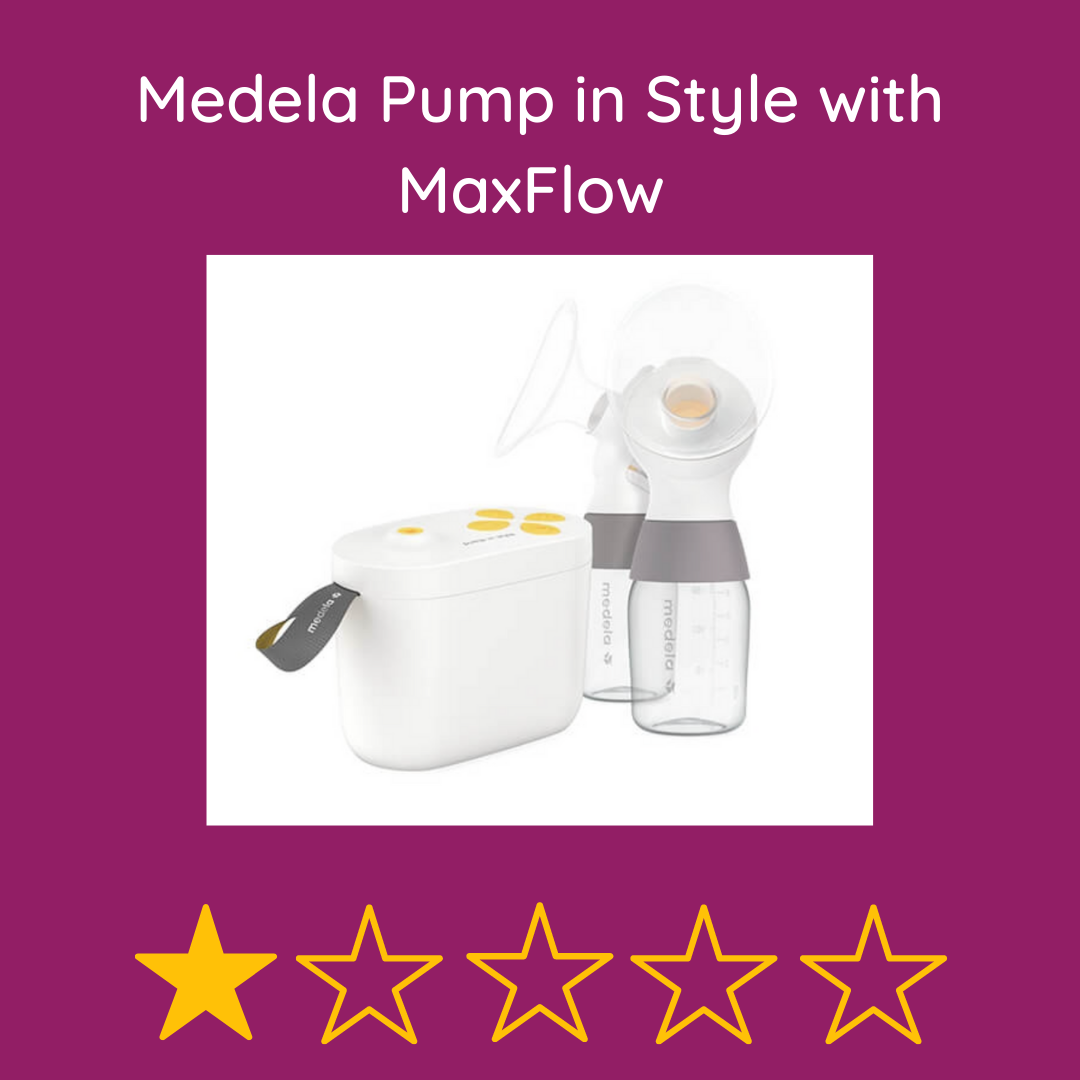The Medela MaxFlow Pump Sucks, What Can I Do?
Meet the Medela Pump in Style with MaxFlow
Believe it or not, this pump is supposed to be an upgraded and reimagined heavy duty pump for moms to use multiple times a day - long term.
This pump is commonly referred to as the Medela MaxFlow to differentiate it from other Medela pumps on social media forums.
To say I despise this breast pump is an understatement… it sucks in the worst possible ways.
-It’s unreliable and lactation consultants across the board find clients reporting poor milk removal and premature failure of this pump.
-The all-in-one design of the flange connectors has to be replaced entirely which results in excess plastic waste and higher expenses.
-Design of the flange connectors makes it hard to see the end of the flange or the top of the bottle. Not an issue for most but its one of those issues that when its a problem its a big problem.
-The tubing is stiff and awkward to work with.
-This pump is loud…..like obnoxiously loud. Even putting it on a soft surface made it hard to have a phone call over. Trying to use this near a sleeping baby sounds like a disaster.
-This pump vibrates a lot. Not in a gentle flutter like a Spectra. It vibrates in a way that reminds me of pulling up next to a car with obnoxiously loud thumping base at a stoplight. This vibration seems to trigger vasospasms for lots of clients which are exceedingly painful. The vibration doesn’t seem to be an intentional feature but rather the vibration of a poor quality motor with no thoughtful design.
-There is no indicator to show what suction level you are on, which seems basic when compared to competitors.
LA Lactation posted this video on Instagram that summarizes my feelings on this pump.
Essentially, this pump is subpar, and it’s not one I recommend purchasing.
“But… I thought the Medela Pump in Style was a quality pump?”
A challenge we have faced with this particular pump is that Medela co-opted the name of their long standing, semi-respectable pump, for this subpar monstrosity. These pumps don’t look the same, the suction strength and patterns are different, and the parts are not cross-compatible. To do this was a deceptive marketing ploy to take advantage of their previous reputation to sell this inferior pump to the detriment of breastfeeding parents.
”But what about if I already have one and am stuck using it?”
There are clients of mine who respond decently enough to it, but the tubing is stiff and awkward, and the parts being expensive to replace are common complaints:
For these issues, the best hacks I have found are to cut the tubing that fits the Medela MaxFlow about 4-5 inches from the base and push on a Freemie Y-connector.
This allows you to use all flanges compatible with the Spectra/Ameda/Motif tubing sizes.
This allows for the use of more flexible tubing, and a wider array of flanges.
This also allows for the use of hands-free cups which can be a great option for many people. Always assure you use flanges that have a backflow protector as this is a closed system pump.
Nenesupply does make compatible replacement parts for this pump that may be more user friendly than the original parts.
The Freemie Y-connector can be plugged on one side to allow for the original tubing to be pushed back onto the pump to use the original adapters.
What about if you have pain from the vibration or just poor milk removal all together?
The best option I have found here is to use the Freemie Y-connector hack with Pumpables Liquid Flanges or Horigen 3D Flanges.
These are soft silicone flanges that collapse with suction which serves to increase nipple stimulation and soften the vibration enough to make the pump serviceable enough for use.
These flanges seem to work better with this pump than the silicone Pumpin Pals which seem to often shake loose with the excessive vibration.
LacTeck Flanges are an option but many report the excessive vibration makes the flange window feel like it’s chewing on the nipple.


